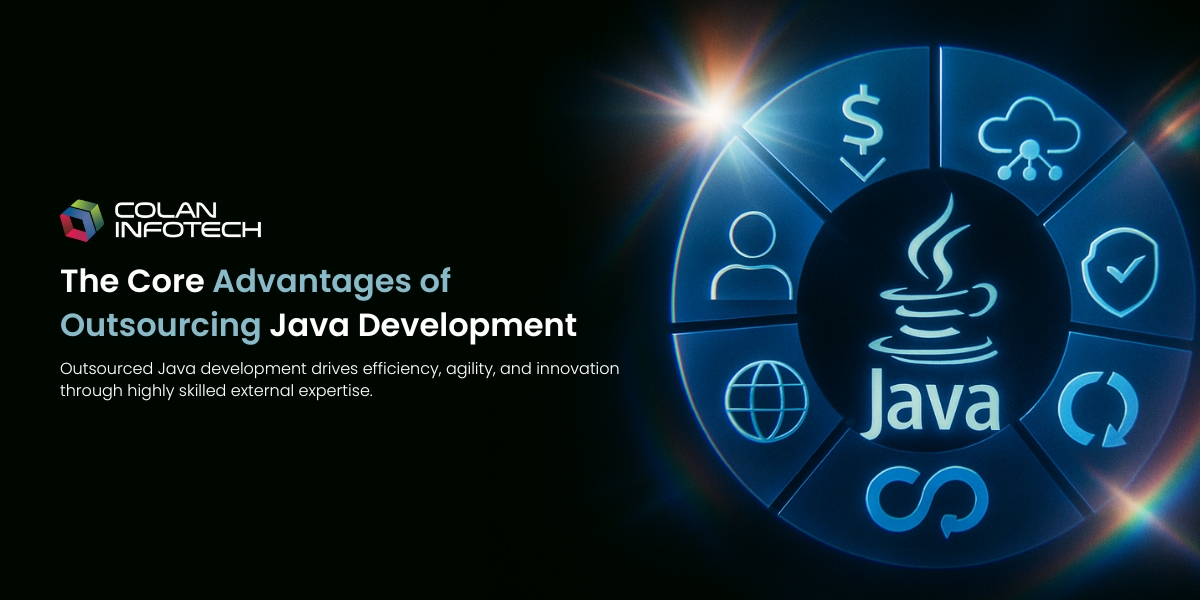What Is Celery? Why Is It A Must Have Skill For Python Developers?

4 min read | By Admin | 12 November 2021 | Frameworks
In today’s high-tech world, modern-day users anticipate web pages to load instantly, but data-intensive tasks can take some seconds or even minutes to complete the page load.
To obtain a faster, streamlined experience, the best way is to offload some of the work. A web application often consists of a subset of long-running, resource-intensive tasks. Consequently, Celery python is ideal for offloading to an asynchronous queuing system to make a faster loading page.
Everybody in a Python development community has heard about Celery at least once, and maybe even already worked with it. Basically, Celery in python is an open-source project for implementing asynchronous task queues and job queues.
Also, it’s a free handy tool and open-source software. Python Celery’s quality may appeal to organizations that support the open-source protocols, and who want to save time & effort.
Celery is a must-have skill for Python developers. Owing to the fact that allows better planning in terms of overall work progress and becomes more efficient. In that way, Python developers can continue working on more important tasks while Celery tasks work their magic in the background.
Significantly if you want users to experience fast load times in your apps or web page, you can offload some work from your web server with the help of Python Celery.
Let’s get started now to know the in-depth rendition of what is celery python with its features and why it’s a must-have skill for Python Developers through this article.
What Is Celery Python?
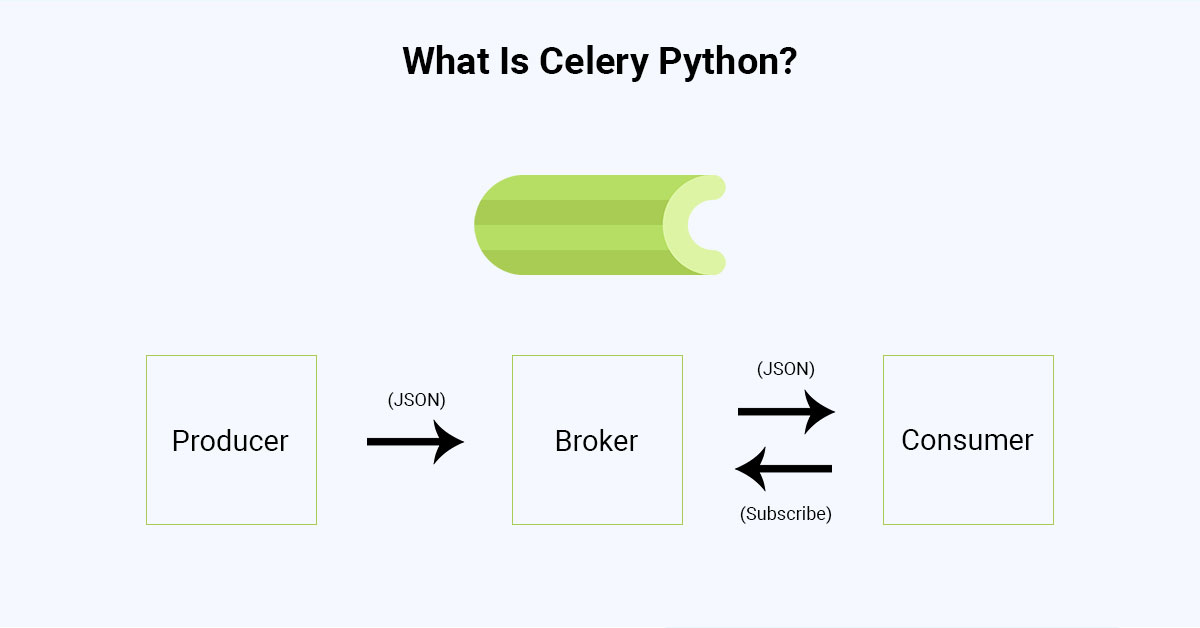
Celery is an open-source python library and is an implementation of the task queue concept for creating tasks that significantly enhances the end user’s experience.
Celery supports multiple message brokers, including RabbitMQ and Redis. In addition to its message broker support, Celery also integrates with multiple web frameworks, including Pyramid, Pylons, Flask, web2py, Tornado, and Tryton.
Celery allows Python applications to quickly implement task queues for many workers and it takes care of the hard part of receiving tasks and assigning them appropriately to workers.
What Is Python Celery Used For?
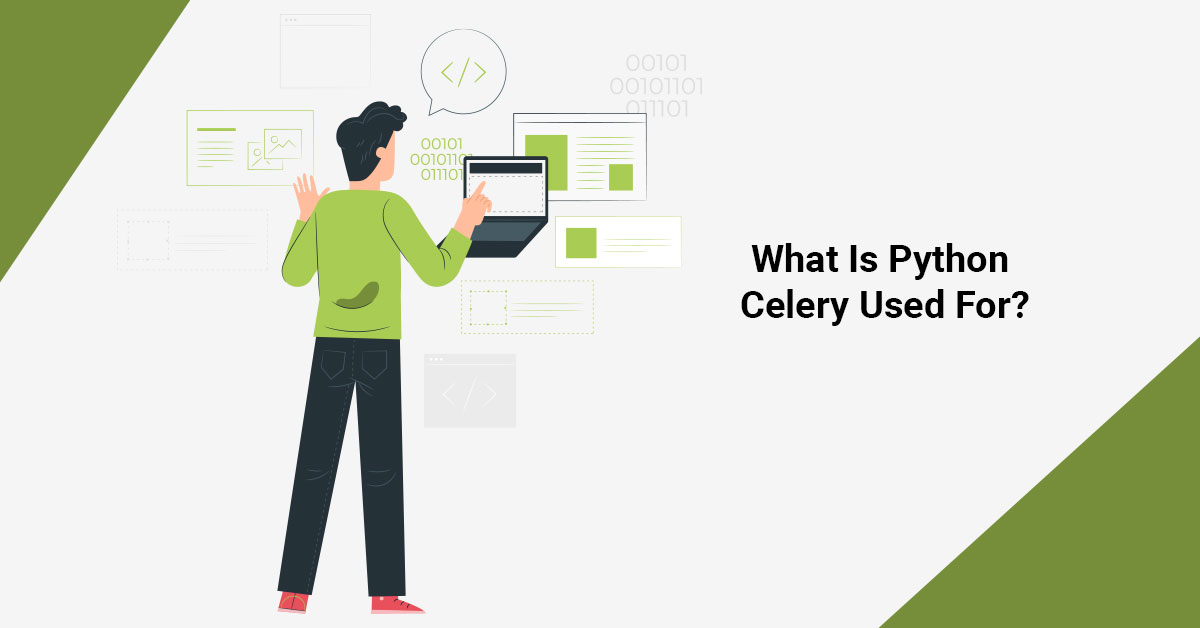
Celery is a task queue implementation for Python web applications used to asynchronously execute work outside the HTTP request-response cycle. Celery can be used to run batch jobs in the background on a regular schedule.
Celery decreases performance load by running part of the functionality as postponed tasks either on the same server as other tasks or on a different server.
Celery can be distributed when you have several workers on different servers that use one message queue for task planning.
With Celery you can run various tasks simultaneously using the main process, and while you do your job, Celery will complete the smaller tasks at hand.
How Does Python Celery Work?
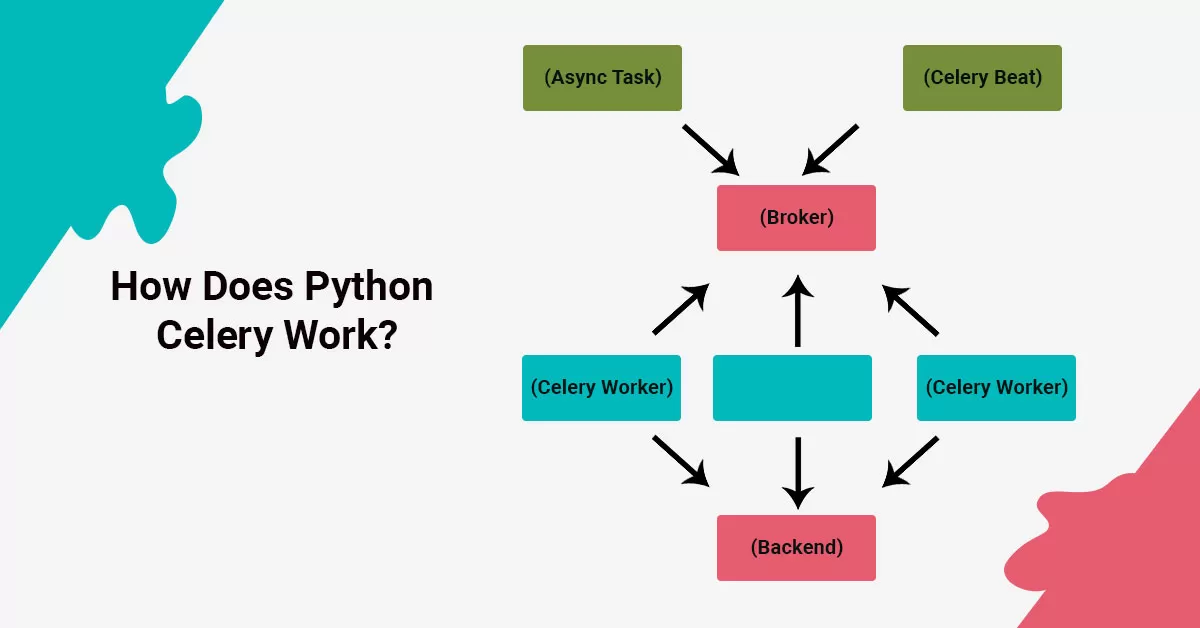
Celery communicates via messages, usually using a broker to mediate between clients and workers. To initiate a task the client adds a message to the queue, the broker then delivers that message to a worker.
The internal working of Celery can easily be stated as the Producer and Consumer model. Producers place the jobs in a queue, and consumers are ready for them from the queue. At high-level Celery has 3 main components:
1. 𝐏𝐫𝐨𝐝𝐮𝐜𝐞𝐫𝐬 – commonly the ‘web nodes’, the web service process, handling the web request. During the request processing, tasks are delegated to Celery i.e. pushed into the task queue.
2. 𝐂𝐨𝐧𝐬𝐮𝐦𝐞𝐫𝐬 – are ‘worker nodes’, listening to the queue head, whenever a task is published, they consume and execute it. Workers can also publish back to the queue, triggering other tasks, hence they can also behave as producers.
3. 𝐐𝐮𝐞𝐮𝐞 – it is the broker, which basically helps passing tasks from web applications to Celery worker(s). Celery has full support for RabbitMQ and Redis, also supports Amazon SQS and Zookeeper but with limited capabilities (RabbitMQ docs).
Why Celery Is A Must Have Skill For Python Developers?

Celery is significantly beneficial for python developers by saving them time so that they can focus on what really matters, their ideas and innovations. That is why it remains one of the most popular background job administrators in the Python world.
With Celery a Python developer can implement a core goals:
➡ Define independent tasks that your workers can do as a Python function.
➡ Assign the requests to workers to complete the task.
➡ Monitor the progress and status of tasks and workers.
➡ Listen to a message broker to get new task requests.
Celery architecture is based on task queues and the number of workers we can assign to each task queue. This way, a developer can uniformly distribute the heavier jobs to Celery tasks with a greater number of workers.
If you are a junior Python developer, Celery implementation can be one of the more challenging parts of a Python web application stack to grasp initially. However, this asynchronous application is well worth the learning investment.
What Are The Benefits Of Celery In Python?
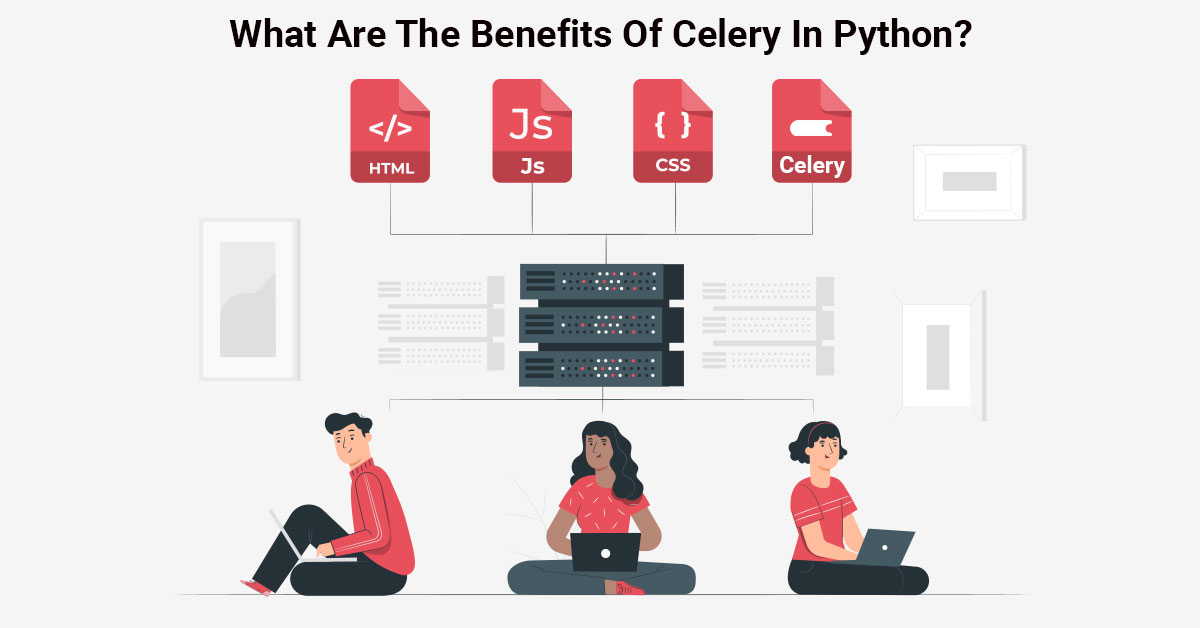
Celery is a framework that decreases performance load through postponed tasks, as it processes asynchronous and scheduled jobs, also it can be achieved on the same server, or on a separate server.
The Python-based task queue also saves developers a significant amount of time.
① 𝐓𝐚𝐬𝐤 𝐪𝐮𝐞𝐮𝐞: With Celery a set of tasks can be run also there can be multiple named queues defined in an application.
② 𝐓𝐚𝐬𝐤: Essentially a python function, a task can be completed given a set of parameters.
③ 𝐁𝐫𝐨𝐤𝐞𝐫: A “database” of messages, where a message is sent when a task is called SQS, for example.
④ 𝐌𝐞𝐬𝐬𝐚𝐠𝐞: Essentially the parameters to a python function. That will also include any task-specific parameters like delay.
⑤ 𝐖𝐨𝐫𝐤𝐞𝐫: A daemon that runs and looks for messages; when it finds them, it runs tasks (celery worker).
Celery is prominent and most practical when aiming to execute tasks that will cost you in terms of resource utilization and performance.
𝐏𝐥𝐞𝐚𝐬𝐞 𝐧𝐨𝐭𝐞: Although Celery is written in Python, also it can be implemented in any language.
All Things Considered – Python Celery
Celery offers numerous features, including monitoring, scheduling, time & rate limits, scheduling, work-flows, autoscaling, high availability, and horizontal scaling.
Also as a Python developer, you can use Celery to accomplish numerous goals. If you’re a Python backend developer, Celery is a must-learn tool.
Hopefully, by now, you can understand why Celery is so fruitful. Hence, once you comprehend what is celery python and how it’s used through this article, it’s fairly easy to implement and maintain to quickly create and manage a system for asynchronous, horizontally-scaled infrastructure.
If you want to make your development journey with Celery, this article will eminently aid you with the best practices. Let’s embrace the incredible tool (Celery) in your development process and experience the prodigious beneficial.
Share your requirement with us and get a free consultation
FREQUENTLY ASKED QUESTIONS
Celery is a distributed task queue, while multithreading is a way to execute multiple threads concurrently within a single process. Multithreading is useful for tasks that are independent and can run concurrently, while Celery is useful for tasks that are potentially long-running, need to be executed asynchronously, or need to be distributed across multiple workers.
By using Celery to execute background tasks, the main application can continue to process user requests without being blocked by resource-intensive tasks. This can improve the overall responsiveness and performance of the application, as well as allow for a better user experience.
Although Celery was created for use with Python, it can also be used with other programming languages through its HTTP-based APIs.
Yes, Celery is known for its simplicity and ease of use. With clear documentation and a large community of users, getting started with Celery is straightforward and fast.
Python Celery offers several benefits for businesses, including: Scalability, Reliability, Flexibility and Improved efficiency.
The latest from our editors
Join over 150,000+ subscribers who get our best digital insights, strategies and tips delivered straight to their inbox.


